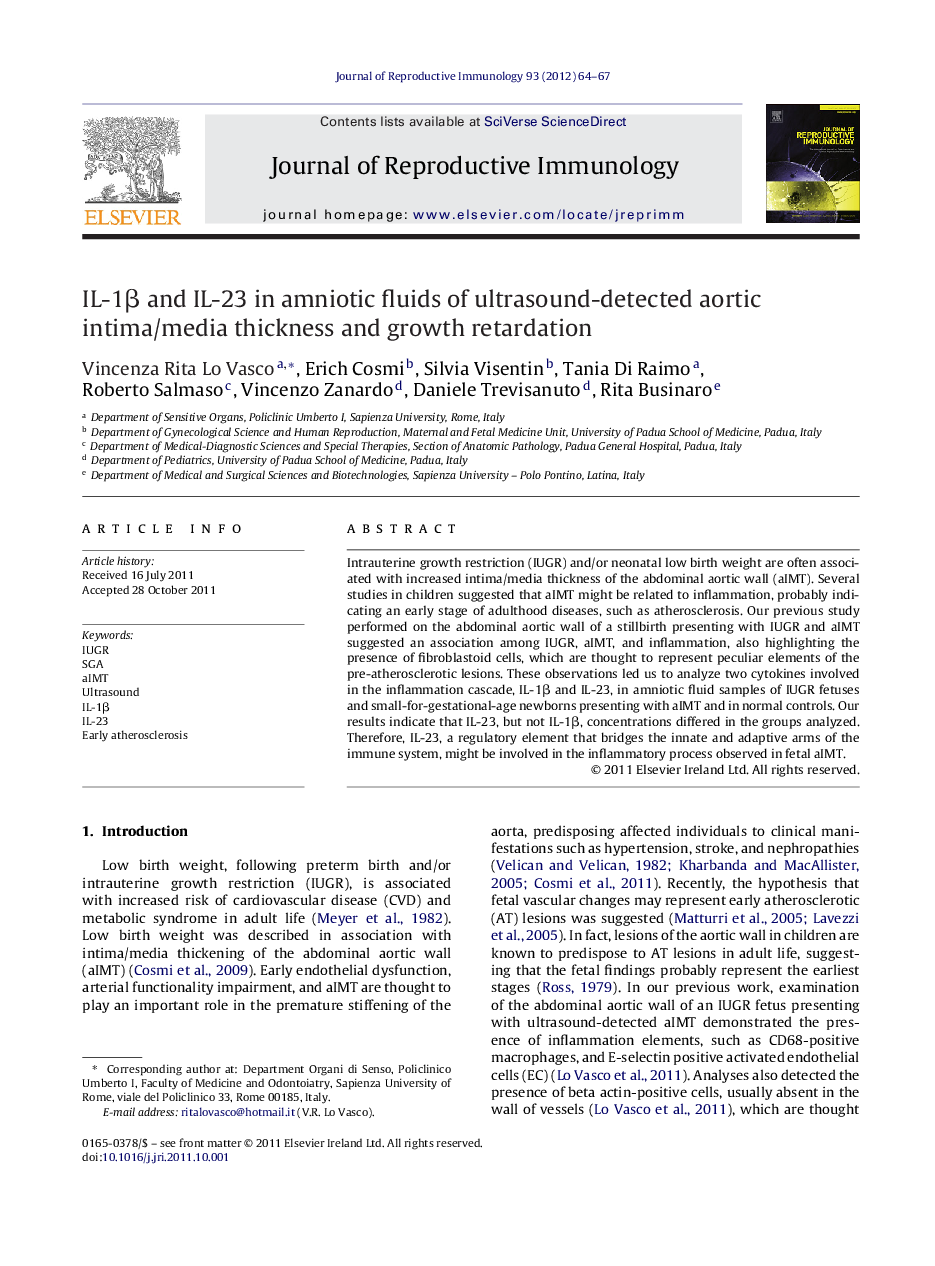| Article ID | Journal | Published Year | Pages | File Type |
|---|---|---|---|---|
| 3963871 | Journal of Reproductive Immunology | 2012 | 4 Pages |
Intrauterine growth restriction (IUGR) and/or neonatal low birth weight are often associated with increased intima/media thickness of the abdominal aortic wall (aIMT). Several studies in children suggested that aIMT might be related to inflammation, probably indicating an early stage of adulthood diseases, such as atherosclerosis. Our previous study performed on the abdominal aortic wall of a stillbirth presenting with IUGR and aIMT suggested an association among IUGR, aIMT, and inflammation, also highlighting the presence of fibroblastoid cells, which are thought to represent peculiar elements of the pre-atherosclerotic lesions. These observations led us to analyze two cytokines involved in the inflammation cascade, IL-1β and IL-23, in amniotic fluid samples of IUGR fetuses and small-for-gestational-age newborns presenting with aIMT and in normal controls. Our results indicate that IL-23, but not IL-1β, concentrations differed in the groups analyzed. Therefore, IL-23, a regulatory element that bridges the innate and adaptive arms of the immune system, might be involved in the inflammatory process observed in fetal aIMT.
